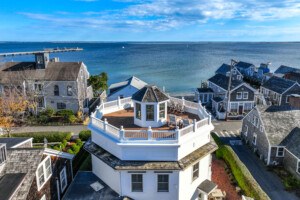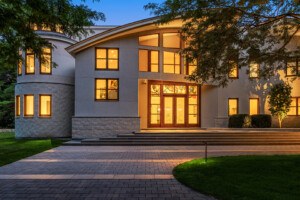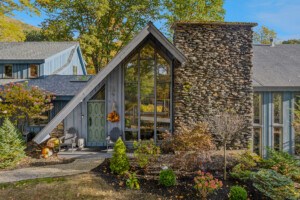What’s the Story behind the Martha’s Vineyard Gingerbread Houses?
Ever wondered about those pastel-colored cottages? Here's everything you need to know about how they got there.
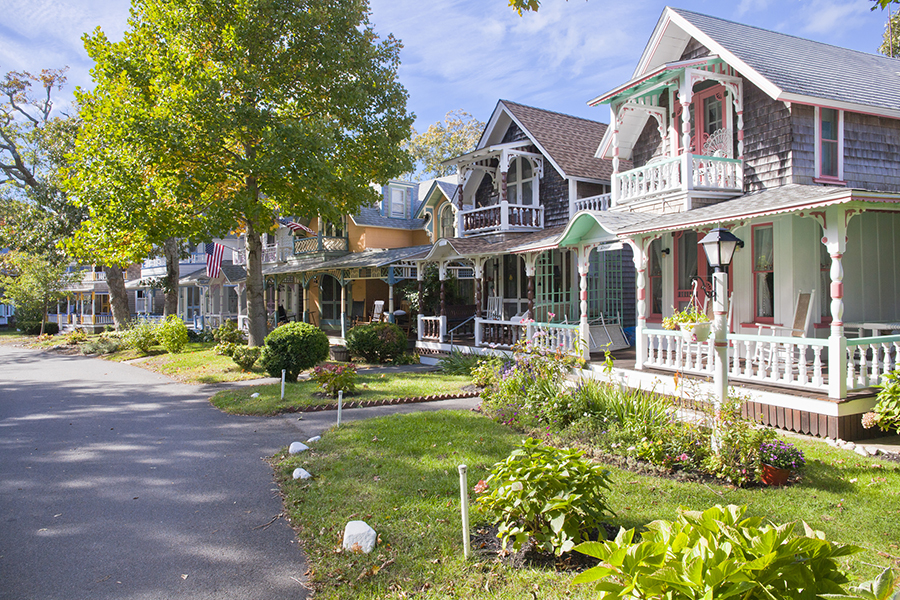
Photo via Getty Images/ Thomas Roche
Painted in shades of lime green or Pepto pink and dripping with intricate wooden trim, it’s impossible to ignore the so-called “gingerbread cottages” on Martha’s Vineyard. The 318 elaborate homes, which are clustered together in Oak Bluffs, are as well-known as the island’s sandy beaches and lighthouses. But like many landmarks, these pastel-colored homes have become such a mainstay that not everyone knows how a bunch of houses that look like they fell out of a fairy tale came to be here. It turns out the story behind the design is more relatable than you think, uniting as it does the universal quest for longer summer vacations—and a desire to show off a new skill.
The story of the cottages begins long before they were even built. In 1835, a group of local Methodists began holding religious camp meetings on a half-acre of land they bought in Oak Bluffs, according to the Martha Vineyard’s Campground Association, which maintains the site today. These outdoor worship meetings were all the rage during the nineteenth century, and Methodists from the mainland would flock to the island to pitch a tent on the site and listen to services held on benches under the trees. After the first meeting was a success, they became an annual tradition, with more and more families coming over each year. By 1855, there were 200 canvas tents up, a drastic increase from the original nine when the site launched. As time went on, families begin to extend their vacations (again, relatable) and needed something a little more substantial to stay in than a canvas tent. Thus began the construction of the now-famous cottages around 1864.
The cottages were designed to replicate the tents they replaced, with narrow footprints and peaked roofs. Strolling through the compound today, you’ll also notice most cabins have double doors, porches, and second-floor balconies. These are meant to mimic the always-open double flaps on the tents, which allowed conversation with passing neighbors, according to Martha’s Vineyard Museum’s research librarian A. Bowdoin Van Riper. Carpenters saved money by using long, vertical 2″ x 4″ exterior boards that ran from foundation to roof, as opposed to other island homes, which had horizontal siding. Many of the initial 500 cottages were small and sold for $200-$600, Van Riper says, with the more spacious ones going for about $3,500.
“By and large, the goal was to build them as quickly, lightly, and inexpensively as possible,” Van Riper says. “[These features], along with the habit of leaving the front and upper doors standing open all the time were a way to recreate…living in a tent [and] living with your lives open to passerby and constantly on display.”
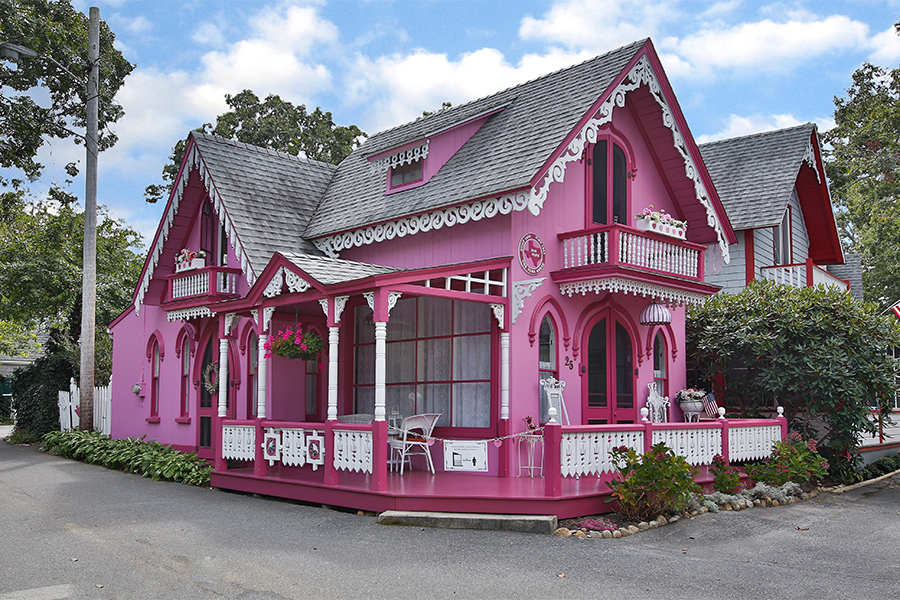
Image provided
Around the same time, another home design breakthrough was hitting the scene: the power-driven jig saw. The icing-like trim that hangs from the eaves and railings came down to a “fortuitous bit of timing,” as Van Riper puts it, as the new invention made it quick and easy to add elaborate details to the homes. And carpenters were all too eager to show off their skills with the new tool. Van Riper speculates a “keeping up with the Joneses” mentality took hold, leading to more and more elaborate woodwork.
The origins of the color of the homes is a bit more hazy: Van Riper says photos from the time only show the cottages in black and white, so it’s not known if they were originally painted colorfully, and there’s no clear reason why they were painted to resemble a basket of Easter eggs.
“Based on the color values in black and white photos, it looks like [the bright colors] go back well into the early stages of the cottage era, but I’ve never seen a satisfactory explanation as to why that particular style took off,” he says.
The homes were initially built as summer homes, but over time people began winterizing the cottages, while others bought adjoining ones to make larger homes. Other cabins were moved elsewhere on the island, which is a common practice on the Vineyard. The MVCMA was listed on the National Register of Historic Places in 1978, sealing the cottage’s place in island history. In 2005, the now 34-acre campus was designated a National Historic Landmark.
If you’re so inclined, you can visit the site and schedule a walking tour during the summer months to view the 318 cabins. There’s even a MVCMA Museum that walks you through the history of the site itself. And if you’re extra lucky, you can rent a cottage—or own one should the opportunity arise—so long as you’re OK with bright pink paint.
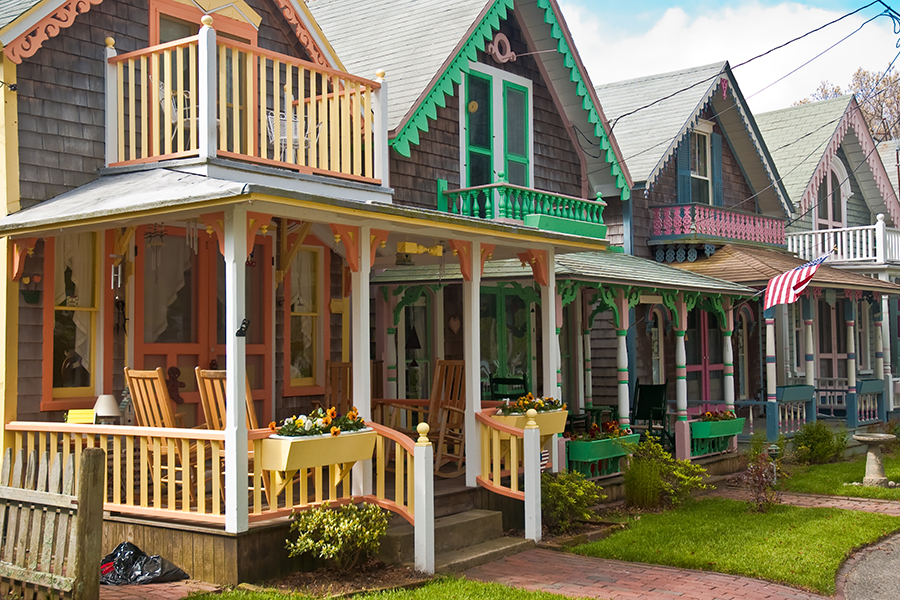
Colorful summer cottages on Martha’s Vineyard, Massachusetts / Photo via Getty Images/ Ken Wiedemann
